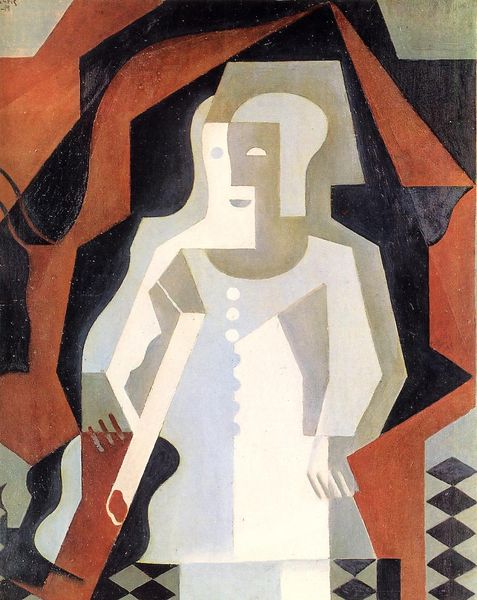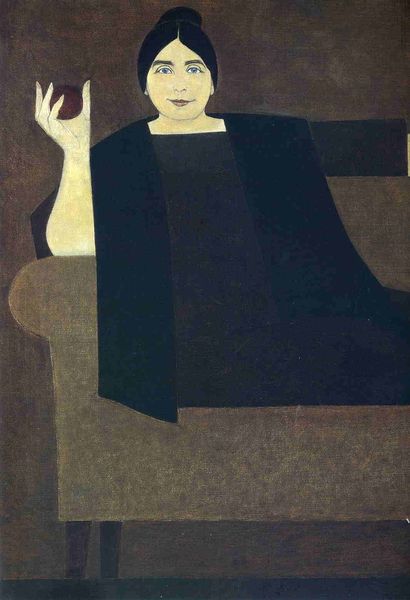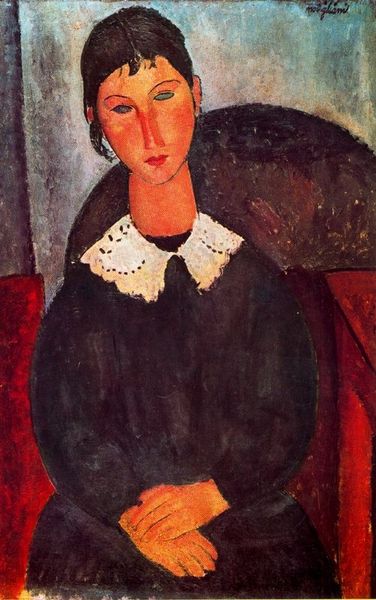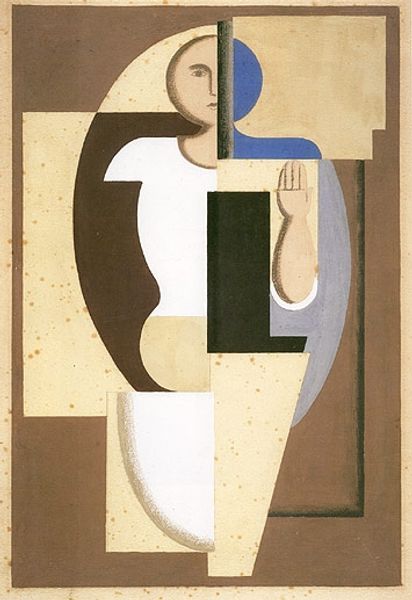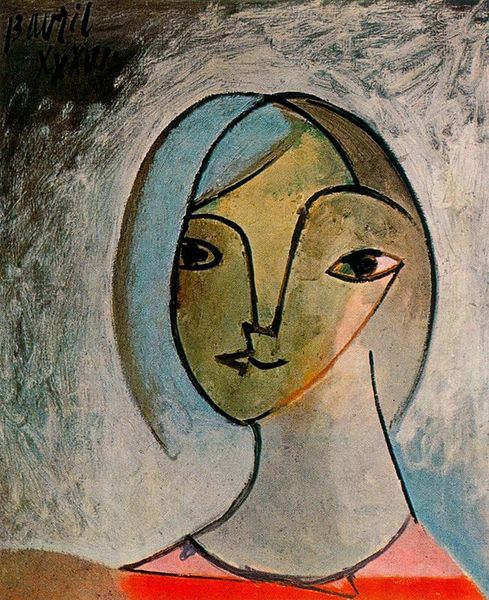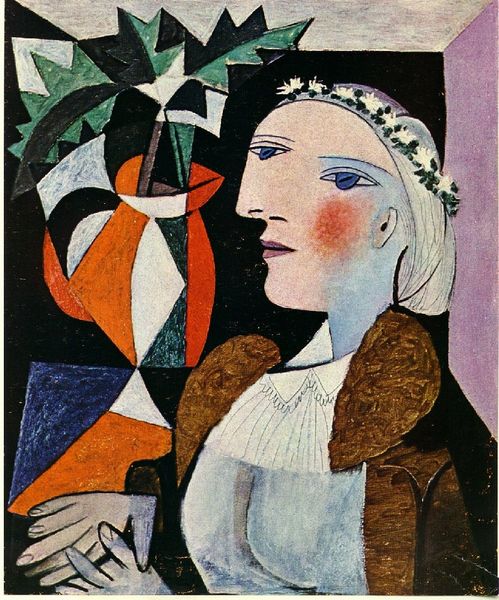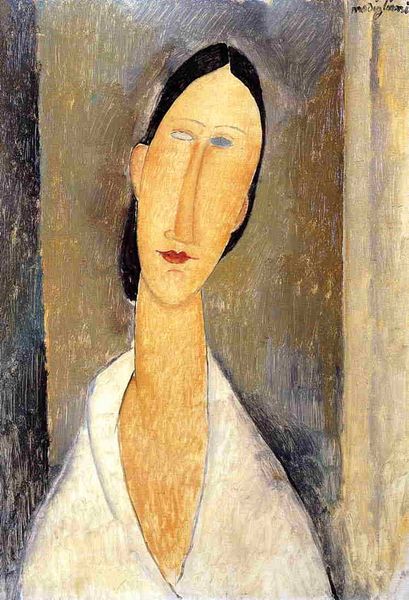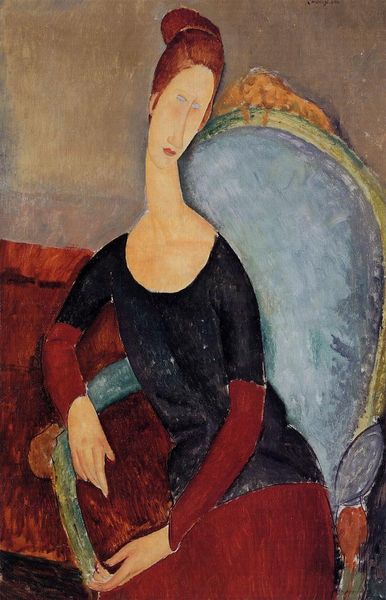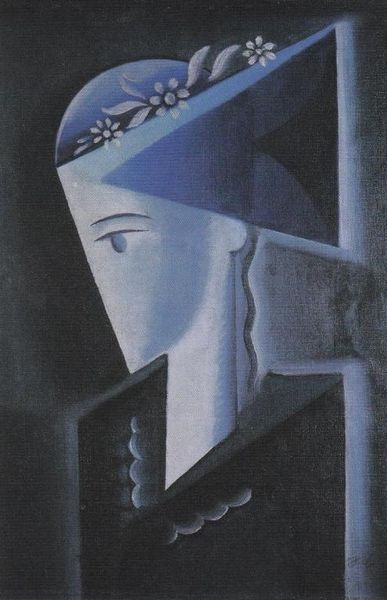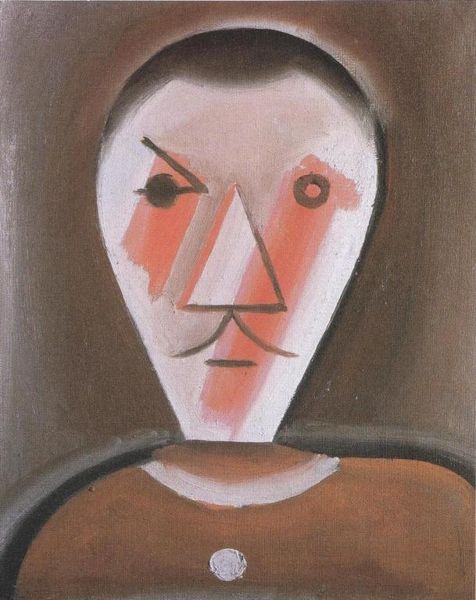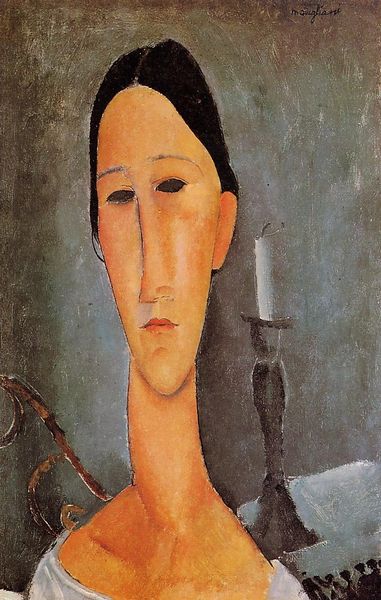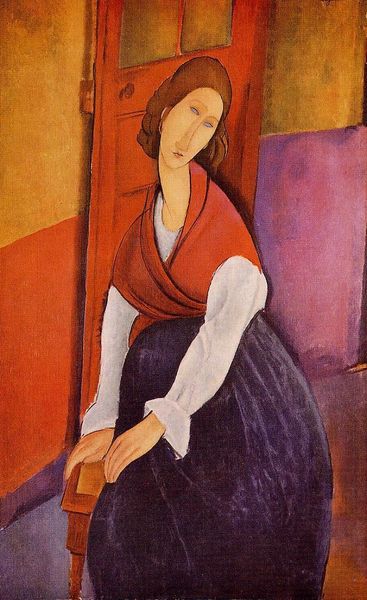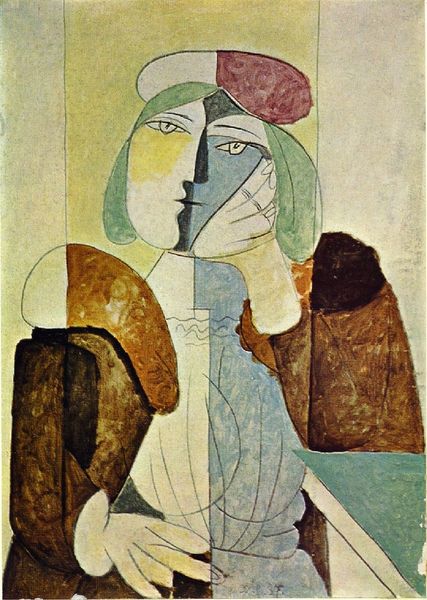
painting, oil-paint
#
portrait
#
art-deco
#
cubism
#
painting
#
oil-paint
#
oil painting
#
portrait art
#
modernism
Copyright: Public domain
Editor: We're looking at Juan Gris' "Clown," an oil painting with definite Cubist vibes. There's a stillness to this piece that I find quite affecting. What captures your attention first about this portrait? Curator: That "stillness," I think, is a lovely way to describe the frozen geometry of it all. But beyond that, I feel the clown’s mask and the carefully constructed planes of his face invite us to consider the nature of performance. Look at how his expression seems both joyful and detached, doesn’t it? Editor: It does! The sharp angles almost make it seem like he's a robot pretending to be happy. And what’s with the grapes next to him? Is there a connection to make between them? Curator: Ah, the grapes! Gris was known for his still life and portrait combinations; so this juxtaposition introduces a slightly decadent note to this austere scene. Perhaps it's about fleeting pleasures masking deeper melancholies. Gris, even with his bold shapes, always held space for emotional complexity. What feeling do *you* glean? Editor: I initially saw sadness, but now with your comments it's more layered—a mix of forced happiness and a yearning underneath. Curator: Precisely. Gris uses the visual language of Cubism to convey something profoundly human – the tensions within. The grapes are a lovely touch that offer food for thought. And a quick refreshment! Editor: That really clarifies how Gris used Cubism not just as a style, but as a way to express complex human emotions. The art went to another layer. Curator: Right? I’ve always been struck by that quiet subversiveness. Thank you for noticing it with me.
Comments
No comments
Be the first to comment and join the conversation on the ultimate creative platform.
